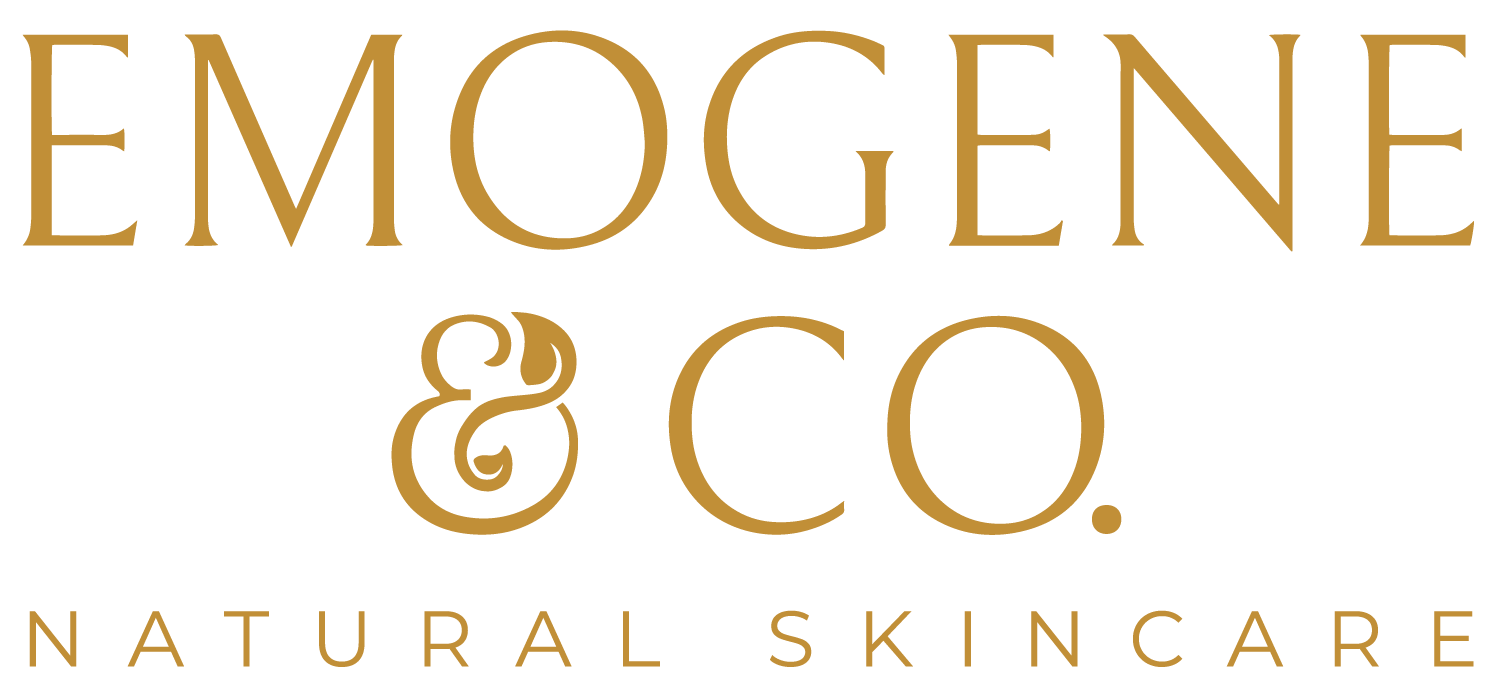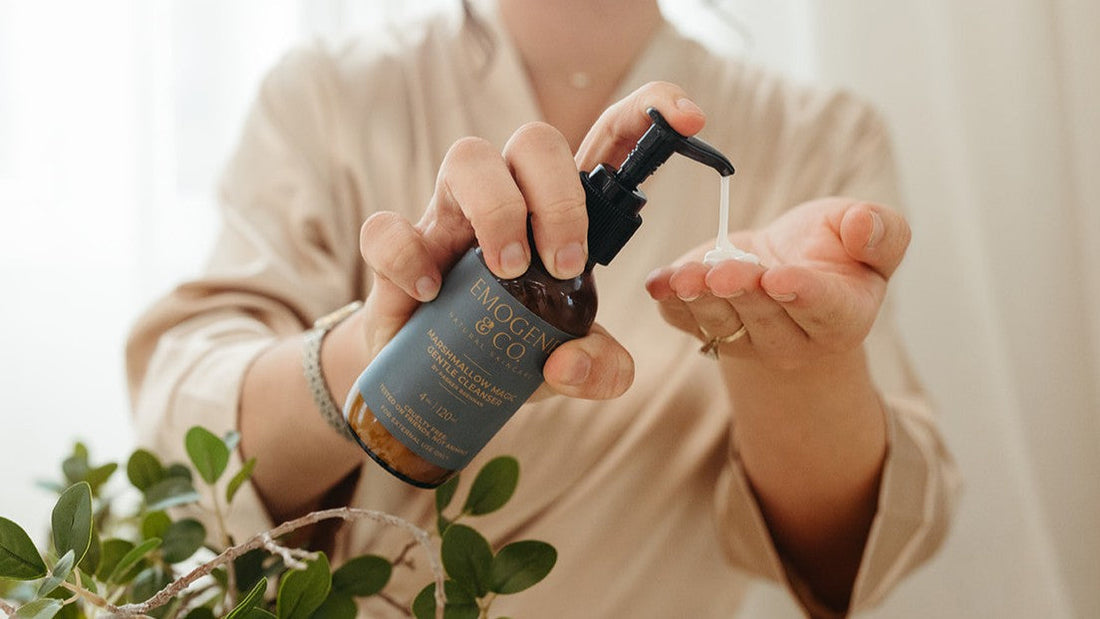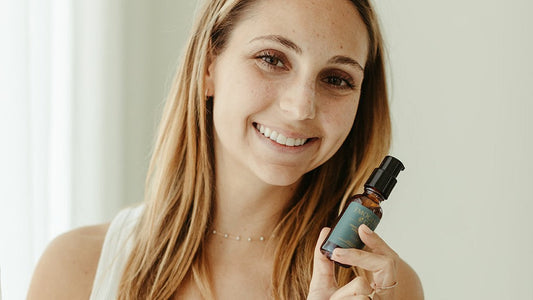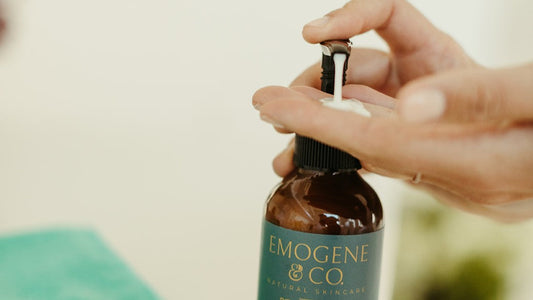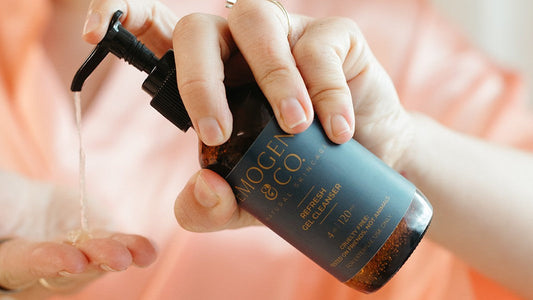At Emogene and Co., our pharmacist-formulated approach isn’t just for grown-up skin - it’s for every stage of life, including the very beginning. Children’s skin is delicate, still developing, and more vulnerable to irritation. That’s why building a safe, simple skincare routine early can help lay the foundation for a lifetime of healthy skin habits.
Why Kids’ Skin Care Needs are Different Than Adults
Children’s skin is structurally different from adult skin. It’s thinner, more sensitive, and not yet fully equipped to handle environmental stressors like pollution, harsh ingredients, and sun exposure. That’s why products designed for adult skin often contain ingredients or concentrations that may be too strong, or even harmful, for little ones.
How Our Skin Develops Over Time
-
Barrier Function: children’s skin barrier is thinner and more delicate than that of adults, making it more susceptible to irritation, dryness, and environmental damage. Too harsh of ingredients can easily disrupt children’s fragile barrier.
-
pH Balance: the natural pH of children’s skin is slightly more acidic than adults, about 5.5, which helps protect against harmful bacteria. This balance can easily be disturbed by strong cleansers and adult skincare products, leading to dryness, itchiness, or even eczema.
-
Sensitivity: children’s skin is still maturing, which means they are more prone to allergic reactions, rashes, and irritation from chemicals or fragrances that adults might tolerate.
Ingredients to Avoid in Children’s Skincare
-
Synthetic Dyes and Artificial Colors: these are common sensitizers and can trigger allergic reactions, especially in lotions and wipes.
-
Sulfates: used as foaming agents, sulfates can strip away natural oils and damage the skin’s protective barrier, leading to dryness and irritation.
-
Parabens: preservatives that are linked to hormone disruption and are banned in many countries due to potential health risks.
-
Retinoids: often found in anti-aging products, retinoids can cause redness, irritation, and even toxicity in children’s skin.
-
Exfoliating Acids (AHAs/BHAs): Ingredients like glycolic acid, lactic acid, and salicylic acid are too harsh for young skin, leading to redness and increased sensitivity.
-
Fragrance/Parfum: common allergens that can contain phthalates, which are linked to developmental toxicity.
-
Alcohol (Denatured): can be extremely drying and irritating for sensitive skin
-
Other Additives: avoid silicones, talc, mineral oils, and strong essential oils.
Safe Skincare Habits for Kids
-
When choosing your child’s skincare, choose age-appropriate products specifically formulated for children, with gentle, natural ingredients.
-
Keep routines simple: a gentle cleanser, like our Marshmallow Magic Gentle Cleanser specifically designed for kids.
-
Avoid products labeled “anti-aging”, “brightening,” or “firming,” as these often contain active ingredients unsuitable for young skin
-
If your child has specific skin concerns (like eczema or acne), consult a pediatric dermatologist before trying new products
Children’s skin deserves extra care and protection - start safe skincare habits early to nurture healthy skin for life.
Share this with fellow moms building safe skincare habits from day one!
